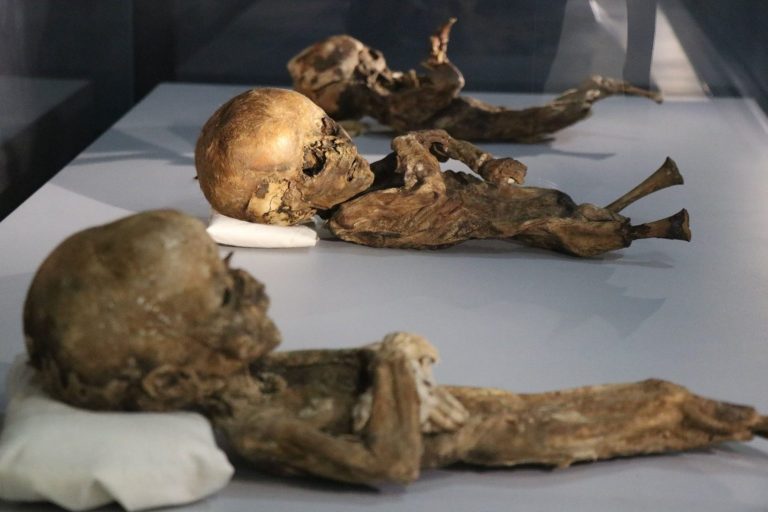Cat, baby, and adult mummies in Aksaray, which took its place in history as Cappadocia’s gateway to the west on the Silk Road, fascinate its visitors in the museum where they are exhibited.

Aksaray history begins with the establishment of the first village settlement of Central Anatolia in Aşıklı Höyük, 11 thousand years ago.
Aksaray and its surroundings were inhabited in the Neolithic period, in the Chalcolithic age, see when life continued uninterruptedly. After that remained under the Hitтιтe, Persian, Hellenistic Period (Alexander the Great), Roman, and Byzantine domination.
Since Christianity, which began to spread in Anatolia by St. Paul and his disciples in the 1st century A.C., caused a great reaction from the polytheistic Roman proponents, the first Christians began to settle in safer places for protection. Also, many clergymen who wanted to cloister preferred Aksaray and its surroundings. In this period, alongside the construction of a large number of underground cities within the borders of Güzelyurt and Gülağaç, the steep slopes in the valleys were carved and in-rock churches and dwellings were built.

Mummy of a baby displayed at the Aksaray Museum, in Aksaray, Turkey. (IHA PH๏τo)
Because of the expeditions of Muslim Arabs to Istanbul over Anatolia starting from the ends of the 7th century, Christians took refuge in Ihlara and Manastır Valley surrounding.
At the Aksaray Museum, which houses Turkey’s first and only mummy section, there stands on display a total of 13 mummies, consisting of cats, babies, and adult humans from the 10th, 11th, and 12th centuries unearthed in excavations in and around Aksaray.
These mummies on display were found during excavations in churches in the Ihlara valley. Some of the mummies were found in the churches built about a thousand years ago in Çanlı Church.
Aksaray Museum Director Yusuf Altın provided information on the mummies, which are preserved in showcases with special heating and cooling systems.
“With 13 mummies in our Aksaray Museum, we are the only museum in Turkey with a mummy section,” Altın said. “There is one mummy in each of the Amasya and Niğde Museums, but our museum has the only section exhibited in this way … in our country.”
“The mummies in our museum were found as a result of the excavations in the churches in Ihlara Valley. Some of our mummies were found in the churches built about a thousand years ago in Çanlı Church,” he stated.

A mummy of a cat displayed at the Aksaray Museum, in Aksaray, Turkey. (IHA PH๏τo)
Altın pointed out that the embalming technique in Turkey was different compared to Egypt.
“Of these mummies, the baby mummy is very technical work in itself. Because the mummification technique in our country is different from the mummification technique in Egypt. In this technique, after the person dies, the internal organs of the corpse are removed, the wax is melted and the corpse is covered with a layer of glaze. Then it is covered with fabric and shroud. It is buried in the ground in this way and the corpse remains preserved for centuries after it dries. We bring our mummies from these excavations to our museum and exhibit them. In particular, we also exhibit the embroideries of necklaces, booties, and shrouds on them.”
Yusuf stated that a cat loved by its owner was also preserved with the mummification technique and that a cat mummy was found during the excavation efforts.
“We have another mummy, the cat mummy, which especially attracts the attention of our children. Our cat mummy was covered with wax and preserved, probably because it was loved by its owner. So, we have been displaying it in our museum,” he said.
“All of our mummies are from the 10th, 11th, and 12th centuries. So, they are almost a thousand years old.”
Source: pahilopahilonews








